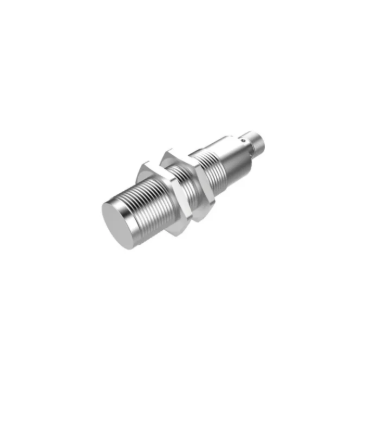Working Principles: Proximity Switch vs Limit Switch
Non-Contact Operation of Proximity Switches
Proximity switches operate through non-contact sensing, leveraging technologies such as inductive, capacitive, or ultrasonic detection to achieve this. These switches can sense changes in electromagnetic fields or capacitance caused by nearby objects, allowing them to provide precise measurements and automate processes effectively. This non-contact nature means that they do not experience the wear and tear associated with physical contact, making them ideal for applications where durability and longevity are priorities. By preventing direct contact, proximity switches ensure a longer operational life and reduce the need for frequent maintenance.
Mechanical Actuation in Limit Switches
Limit switches, in contrast, function through mechanical actuation, where an object physically interacts with the switch to open or close electrical contacts. This interaction often involves levers or push buttons, providing a reliable signal that indicates the position of machinery or a component. Due to their mechanical nature, limit switches can handle larger load currents, making them versatile tools for controlling large machines and suitable for safety interlocks in various industrial applications. Their straightforward design and reliable operation mean they're widely used where a clear, mechanical indication of position is necessary, even though they may face more wear and tear due to direct contact.
Key Differences Between Proximity and Limit Switches
Contact vs Non-Contact Sensing Mechanism
The primary distinction between proximity and limit switches lies in their sensing mechanisms. Proximity switches are designed to sense the presence of an object without any physical contact, while limit switches require direct contact with the object to operate. This fundamental difference significantly impacts their wear and longevity. Proximity switches typically have an extended lifespan since there are no mechanical parts to wear down over time. As a result, they can last up to ten times longer than their limit switch counterparts, especially in harsh and demanding environments. This non-contact operation makes proximity switches ideal for applications where frequent mechanical wear and tear would be a concern.
Durability and Lifespan Comparison
Proximity switches generally outlast limit switches due to their non-contact design, which is particularly advantageous in applications with high cycle rates. The absence of physical contact results in fewer mechanical failures and makes them suitable for long-term usage. On the other hand, limit switches, with their mechanical operation, are prone to premature failure in environments with dust or moisture, where parts can easily wear. Studies have shown that while limit switches may endure several thousand operations, properly selected proximity switches can persist for millions, ensuring uninterrupted performance and reduced maintenance requirements over time.
Environmental Tolerance and Application Scenarios
In terms of environmental tolerance, proximity switches excel in challenging conditions such as dust, moisture, and extreme temperatures, largely due to their encapsulated designs. These features make them suitable for environments where switch integrity is crucial. For example, the food and beverage industry often prefers proximity switches to meet hygiene standards and cleanliness protocols. Limit switches, meanwhile, are typically used in applications requiring direct physical feedback, such as safety shutdowns or mechanical position monitoring, due to their robust nature and reliability in delivering clear, direct signals under controlled conditions.
Factors to Consider When Choosing Between the Two
Application Requirements: Precision vs Robustness
When deciding between proximity and limit switches, the application requirements should be assessed to determine whether precision or robustness is more critical. High-precision tasks, such as those on assembly lines, typically favor proximity switches due to their accurate object detection capabilities without physical contact. In contrast, environments characterized by high vibrations or significant dust loads may require the more robust, mechanical integrity of limit switches. Their ability to endure physical contact makes them suitable for operations prioritizing durability over sensitivity.
Environmental Conditions (Dust, Moisture, Temperature)
The environmental conditions where the switch will be deployed significantly influence the choice between proximity and limit switches. Proximity switches generally have the edge in conditions with high dust accumulation, moisture presence, or extreme temperature fluctuations, thanks to their sealed design. Studies have shown that such environments can cause performance discrepancies between the two types, often favoring proximity switches due to their ability to maintain consistent operation amidst these challenges. Therefore, choosing the appropriate switch type demands a thorough understanding of the specific environmental compatibility required.
Maintenance Needs and Long-Term Costs
Understanding the maintenance requirements and associated long-term costs of each switch type is crucial for operational efficiency. Proximity switches, with fewer mechanical parts, tend to necessitate less maintenance compared to limit switches, which can be prone to wear from repeated physical contact. When conducting a return on investment (ROI) analysis, it is vital to consider not only the upfront purchase costs but also ongoing maintenance expenses and potential downtime from switch failures. A well-rounded cost analysis helps in choosing a switch type that aligns best with both financial and operational goals.
Common Industrial Applications for Each Switch
Proximity Switches in Automated Systems
Proximity switches are widely employed in automated systems, offering reliable solutions for tasks such as object detection, conveyor control, and product counting. They excel in environments where high-speed precision is required, showcasing fast response times that make them ideal for assembly lines. Additionally, proximity switches are integral to robotic systems, ensuring safety and accurate movement tracking. These features not only enhance operational efficiency but also mitigate the wear and tear associated with mechanical components, providing a longer lifespan for the equipment in automated setups. This makes proximity switches indispensable in modern industrial automation.
Limit Switches for Safety and Position Control
Limit switches are crucial components in safety and position control systems, providing a mechanical actuation that is vital in many industrial applications. Their robust design makes them perfect for preventing machinery from operating beyond set parameters, commonly seen in elevators and various industrial equipment. This direct and visible feedback simplifies troubleshooting and adjustments. Despite advancements in sensor technology, the simplicity and reliability of limit switches continue to make them a preferred choice in situations where mechanical integrity is paramount. Their role in ensuring positional security cannot be understated, proving essential in maintaining safety and operational integrity.
FAQs
What is the main difference between proximity and limit switches?
The main difference lies in their sensing mechanisms. Proximity switches detect objects without physical contact, while limit switches require direct interaction with the object to operate.
Are proximity switches more durable than limit switches?
Yes, proximity switches are generally more durable due to their non-contact operation, which reduces mechanical wear and tear.
In which industries are proximity switches preferred?
Proximity switches are commonly used in industries requiring precise object detection, such as automation, food and beverage, and pharmaceuticals, to meet sanitation standards and cleanliness protocols.
Why might someone choose a limit switch over a proximity switch?
Limit switches may be chosen for environments needing robust performance under physical contact, such as in safety shutdowns or mechanical position monitoring.

